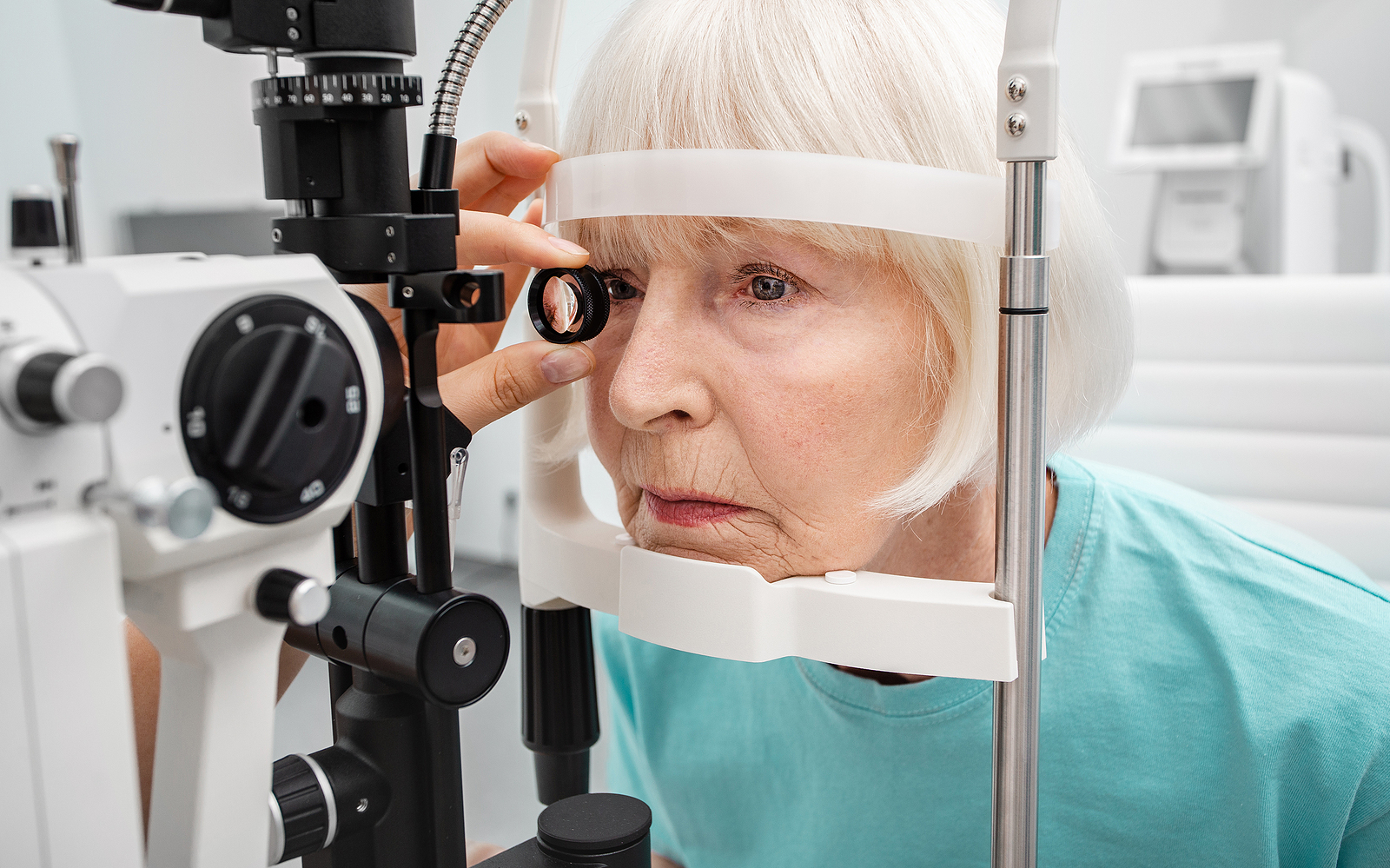Tips to Prevent Age-Related Macular Degeneration

If caught early, the progress of age-related macular degeneration can be slowed or even stopped.
For adults over the age of 60, age-related macular degeneration (or AMD) is the leading cause of blindness. Some estimates predict that nearly 200 million people around the globe will have the disease by 2020.
The “age-related” in the name might make it seem like developing the condition is inevitable, but the good news is that AMD is preventable. Here’s what you need to know about identifying the signs of AMD and slowing its progress.
What Is Age-Related Macular Degeneration?
AMD is a progressive disease that causes the macula — which is the small area at the center of the retina — to break down, resulting in blind spots in the central field of vision. The macula is also responsible for our ability to see fine details, so AMD can interfere with reading, driving, and seeing facial expressions.
There are two varieties of macular degeneration: wet and dry. Wet, or neovascular, macular degeneration is caused by blood vessels leaking into the retina. As the blood scabs over, it causes scarring and permanent vision loss. Dry, or non-neovascular, macular degeneration is far more common and is caused by protein deposits in the macula. The dry form doesn’t cause as severe of vision loss, but over time the protein build-up dims or distorts vision.
What Are the Symptoms and Causes of AMD?
Similar to other progressive eye diseases like glaucoma, AMD often presents few symptoms initially — meaning that by the time it’s detected, the condition will already have progressed considerably. For that reason, it’s essential to get regular eye exams. The most common symptom of AMD is blurred vision, though others can include objects appearing discolored or distorted, a greater need for light or magnification, straight lines appearing wavy, and difficulty reading or driving.
While there is no known direct cause of AMD, researchers have demonstrated it’s possible to be genetically predisposed to developing the disease. People who are Caucasion and have a history of AMD in their family are most at risk, though smoking, obesity, and high blood pressure have also been found to increase the chances of developing the condition.
What Can You Do to Help Prevent AMD?
If left untreated, AMD will eventually lead to permanent vision loss. However, there are ways you can help prevent it from progressing:
- Don’t smoke — or if you do, quit.
- Try to eat plenty of leafy green vegetables, like kale and raw spinach.
- Take a daily multivitamin (unless otherwise recommended by your doctor).
- Eat fish or take fish oil supplements.
- Do your best to exercise regularly and maintain a healthy weight.
- Wear sunglasses when outdoors.
- See your optometrist regularly.
While there’s currently no cure for AMD, there are some medical treatment options that may help to slow or lessen the loss of vision. These include:
- Anti-angiogenic drugs. These stop new blood vessels from forming in the eye.
- Laser therapy. There are different forms of therapy that can be used to destroy abnormal blood vessels.
- Vitamins. Studies show that taking vitamins C and E, beta-carotene, copper, and zinc can help reduce vision loss for people with dry AMD in intermediate to advanced stages. Lutein and zeaxanthin are also beneficial supplements.
If you’d like to talk to an eye care specialist about AMD and possible treatments, contact us today at our Mesa and Chandler locations. Our doctors are highly trained in retinal issues like AMD, and will work with you to ensure that your eyes stay as healthy as possible in the years to come.
[DISPLAY_ULTIMATE_SOCIAL_ICONS]








